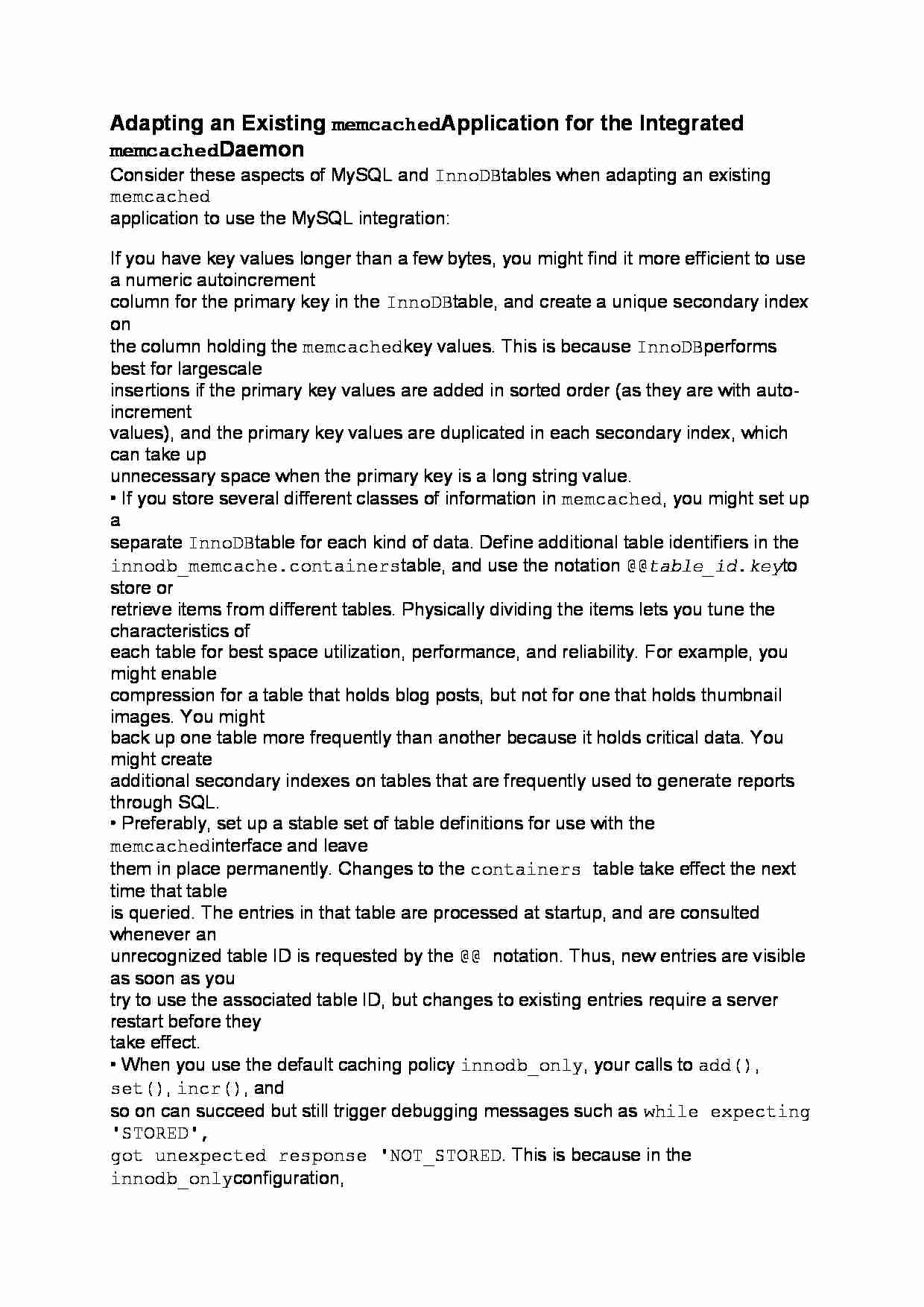To tylko jedna z 2 stron tej notatki. Zaloguj się aby zobaczyć ten dokument.
Zobacz
całą notatkę


Adapting an Existing memcached Application for the Integrated memcached Daemon
Consider these aspects of MySQL and InnoDB tables when adapting an existing memcached
application to use the MySQL integration:
If you have key values longer than a few bytes, you might find it more efficient to use a numeric autoincrement
column for the primary key in the InnoDB table, and create a unique secondary index on
the column holding the memcached key values. This is because InnoDB performs best for largescale
insertions if the primary key values are added in sorted order (as they are with auto-increment
values), and the primary key values are duplicated in each secondary index, which can take up
unnecessary space when the primary key is a long string value.
• If you store several different classes of information in memcached, you might set up a
separate InnoDB table for each kind of data. Define additional table identifiers in the
innodb_memcache.containers table, and use the notation @@table_id.key to store or
retrieve items from different tables. Physically dividing the items lets you tune the characteristics of
each table for best space utilization, performance, and reliability. For example, you might enable
compression for a table that holds blog posts, but not for one that holds thumbnail images. You might
back up one table more frequently than another because it holds critical data. You might create
additional secondary indexes on tables that are frequently used to generate reports through SQL.
• Preferably, set up a stable set of table definitions for use with the memcached interface and leave
them in place permanently. Changes to the containers table take effect the next time that table
is queried. The entries in that table are processed at startup, and are consulted whenever an
unrecognized table ID is requested by the @@ notation. Thus, new entries are visible as soon as you
try to use the associated table ID, but changes to existing entries require a server restart before they
take effect.
• When you use the default caching policy innodb_only, your calls to add(), set(), incr(), and
so on can succeed but still trigger debugging messages such as while expecting 'STORED',
got unexpected response 'NOT_STORED. This is because in the innodb_only configuration,
new and updated values are sent directly to the InnoDB table without being saved in the memory
... zobacz całą notatkę




Komentarze użytkowników (0)